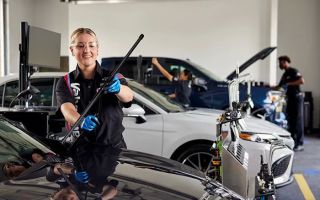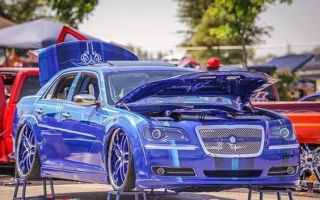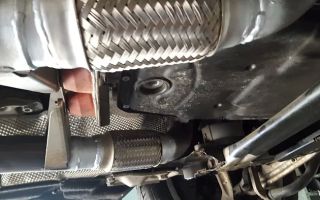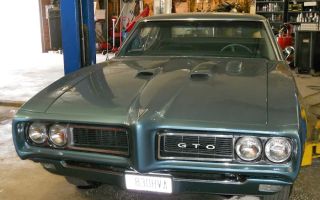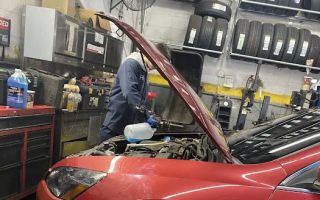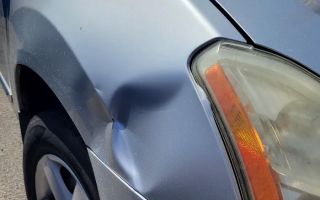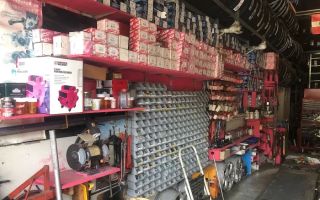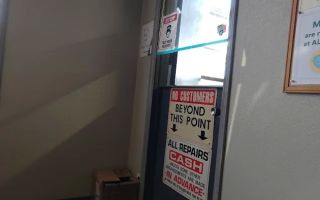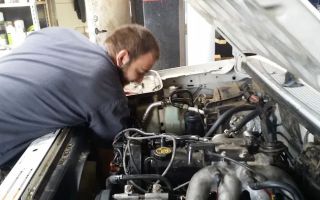Does a Jumpstart Work on All Vehicle Types?
If you’ve ever found yourself stranded with a dead car battery, you’ve probably thought about jumpstarting your vehicle. After all, a jumpstart is often seen as a quick and easy solution. But does a jumpstart work on all vehicle types? In this article, I’ll explore the mechanics behind jumpstarting, discuss when it’s appropriate to use, and share insights into whether every vehicle type is compatible with a jumpstart. I’ll also share some real-world experiences from my time working in the automotive service industry, along with practical advice for those who may be considering a jumpstart as their go-to solution.

Shell
18525 N Conduit Ave, Queens, NY 11413, USA
1. What Is a Jumpstart and How Does It Work?
Before diving into the specifics of whether a jumpstart works on all vehicle types, it's important to understand what a jumpstart is and how it works. A jumpstart is a process where a dead battery in one vehicle is revived using power from a working battery in another vehicle. The procedure typically involves using jumper cables to connect the two batteries in parallel, allowing the power from the live battery to flow into the dead one, giving it enough charge to start the vehicle.
For most cars, the process is fairly simple. However, there are certain factors to consider, such as battery voltage, the age and condition of the battery, and the vehicle’s electrical system. This leads to the question: does this method work universally on all types of vehicles?
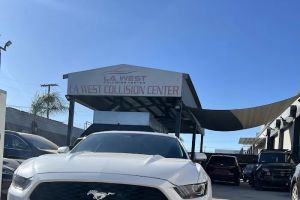
LA West Collision Center
6827 Troost Ave, North Hollywood, CA 91605, USA
2. Can You Jumpstart Any Vehicle?
Generally speaking, jumpstarting works on most vehicles, but there are exceptions. For example, cars with a standard 12-volt battery system are typically jumpstart-friendly. This includes most passenger vehicles, such as sedans, SUVs, and trucks. However, there are some vehicles that require more attention or alternative solutions.
For example, electric vehicles (EVs) and hybrids have unique electrical systems that differ significantly from traditional gasoline-powered cars. In these cases, jumpstarting may not work in the same way or may even be unsafe. The reason for this is that EVs use a high-voltage battery system, which cannot be jumpstarted using the same method as a traditional 12-volt system. Attempting to do so can cause significant damage to both the vehicle’s electrical system and the jumper vehicle’s system.
Additionally, some luxury vehicles and high-end models come equipped with sensitive electronics and complex electrical systems. In these cases, it is advisable to consult with a professional or use a specialized jumpstarting procedure to avoid damaging critical components.
3. When to Avoid Jumpstarting Your Vehicle
Jumpstarting a vehicle might seem like an obvious solution when facing a dead battery, but it’s not always the best choice. Here are a few situations where you should avoid attempting a jumpstart:
- High-Voltage Electrical Systems: As mentioned, electric vehicles and hybrids with high-voltage batteries should not be jumpstarted using traditional methods. These vehicles have different charging and power systems that could be damaged by the process.
- Severe Battery Damage: If your battery has been severely damaged or has leaked, jumpstarting it may not only fail to work but could also present a fire or explosion risk.
- Corroded Terminals: If the battery terminals are heavily corroded, jumpstarting can be ineffective and dangerous. Corrosion can prevent the cables from making a proper connection and could cause sparks.
During one of my past roadside assistance calls, I came across a customer who had attempted to jumpstart their vehicle with a corroded battery terminal. The jumpstart failed, and the vehicle remained unresponsive. After cleaning the corrosion off the battery terminals, I was able to successfully jumpstart the car. This experience taught me that sometimes it’s not the method but the condition of the battery that determines whether a jumpstart will work.
4. What Are the Risks of Jumpstarting a Vehicle?
While jumpstarting a car is generally safe when done properly, there are risks involved. These risks can lead to damage to either your vehicle or the one providing the power. Here are some potential dangers:
- Incorrect Connections: One of the most common mistakes during a jumpstart is incorrect cable connections. Connecting the cables in the wrong order can lead to short circuits or even sparks that can ignite flammable materials under the hood.
- Damage to the Electrical System: If the voltage is too high or if there’s a power surge, jumpstarting can damage the electrical systems of both vehicles. This can lead to costly repairs.
- Battery Explosion: In rare cases, jumpstarting a battery that is too old, damaged, or leaking could cause the battery to explode, which is highly dangerous.
In one incident I witnessed while assisting a stranded motorist, the battery of the car they were trying to jumpstart exploded after an incorrect connection. Luckily, no one was seriously injured, but it’s a reminder of the importance of ensuring that everything is done correctly before attempting a jumpstart.
5. How to Safely Jumpstart a Vehicle
If you find yourself in a situation where a jumpstart is necessary and it’s safe to do so, here are the steps you should follow:
- Ensure both vehicles are turned off: Both vehicles should be off before starting the jumpstart process.
- Connect the positive cables first: Attach the red (positive) jumper cable to the positive terminal of the dead battery, then to the positive terminal of the live battery.
- Attach the negative cables: Next, attach the black (negative) jumper cable to the negative terminal of the live battery. The other end should be attached to an unpainted metal surface on the car with the dead battery.
- Start the donor vehicle: Start the vehicle with the live battery and let it run for a few minutes.
- Attempt to start the dead vehicle: Try starting the vehicle with the dead battery. If it doesn’t start, wait a few minutes and try again.
If your vehicle still doesn't start after a few attempts, it could be a sign that there is a more serious issue, and you may need professional help. In these cases, it’s best to contact a towing or roadside assistance service like Rescue & Towing to avoid further complications.


